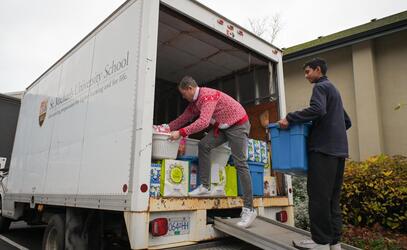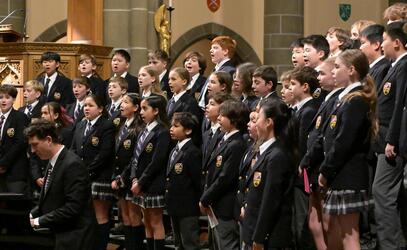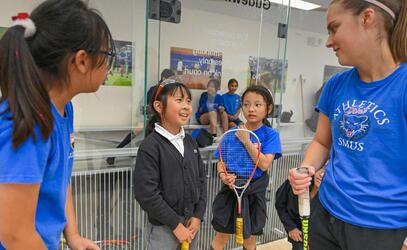A friend of mine recently commented that in the morning he often finds himself looking at his 13-year-old’s bedroom door wondering who will emerge that day: the three-year-old or 30-year-old. And though the comment was meant in the spirit of humorous commiseration between a group of Middle School parents, his observation describes quite accurately the physiology of the adolescent brain.
As children enter puberty their brain enters a period of development that closely resembles what was happening when they went through their “terrible twos.” Research has shown that under a microscope, cross-sections of toddler and teenage brains are almost identical. They show a jumble of neurons that look like a tangled pile of spaghetti; whereas the brains of an eight-year-old or a 30-year-old have much more organized neural pathways. These chaotic neural pathways mirror some of the chaotic behaviour you may be seeing at home. Until the right neural pathways get pruned and myelinated through disuse and use, a process our students begin to learn about at the Junior School, adolescents will exhibit some varied behaviour. One way of thinking about these less desirable adolescent behaviours is remembering they represent vital leaps in brain development.
Another tricky part of brain development is that your adolescent seems so much more capable than they did as a toddler. They can now more clearly express themselves (some of the time), wrestle with more abstract concepts, and are so much more physically coordinated. But despite these huge areas of cognitive growth, their prefrontal cortex (the area responsible for decision making, planning and emotional regulation) is still very similar to the prefrontal cortex they had as a toddler. So even though many Middle Schoolers are capable of amazing feats in the classroom, on stages and sporting fields, they understandably still have difficulty with planning, decision making and emotional regulation.
This varied brain development is exactly what makes human development so amazing. Scientists believe the reason our brains develop so slowly compared to animals is that this protracted developmental process allows for the development of specifically human skills, especially those acquired through being in a highly stimulating sociocultural environment.
Our Middle School is the ideal “highly stimulating sociocultural environment” for our students to learn and grow. Middle School educators are an amazing group who have dedicated their careers to work with students during this fascinating time of brain development. Through years of experience with hundreds of students, we have honed the art of challenging our students to grow and helping them when they need support.
Throughout a typical day at the Middle School, I get to bear witness to dozens of encouraging conversations, where teachers are guiding the growth of healthy neural pathways. Our Student Support Team of learning resource specialists, counsellors and educational assistants provides that additional level of support. The no cellphone policy enables students to learn and grow free from the addictive pull of their phones. Our varied and rich academic day, which includes curriculum that is moving from the concrete to the more abstract, opportunities for artistic and athletic expression, mindfulness practices and which starts and ends with TAG, is designed purposely to be a supportive and enriching community where your child has a safe place to experience the ups and downs that are the hallmark of this developmental stage.
The home and school connection is also very important during this stage of cognitive development, though this relationship may look different than it did during the elementary years, as students now want more autonomy. While your child may no longer want to hold your hand in the schoolyard, as teachers and parents we understand that a strong relationship and communication between home and school is the ideal. As well, a home environment that encourages a healthy diet, sleep schedule, boundaries around technology and downtime provides an ideal foundation on which our teachers can build.
We are so honoured to be partners with parents on this exciting roller coaster ride and are confident in knowing we are well-equipped to help the toddler/adult brain, that resides in each Middle School student, flourish.



